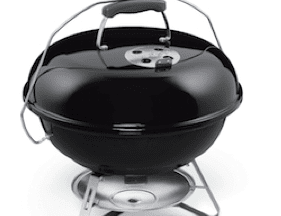Smart wholesale buying can lead to ecommerce success and good profits. But the act of buying products to sell on an ecommerce site can be more of a challenge than one might at first imagine.
With the possible exception of certain kinds of digital or downloadable products, most business-to-consumer ecommerce retailers buy products — apparel, knickknacks, or whatever — and sell those same products.
To choose which products to buy and decide what is a fair price, retail buyers must (a) know about their customers and understand customer needs; (b) understand their inventory position, especially as it impacts cash flow; (c) build strong relationships with supplier representatives; and (d) measure, analyze, and, ultimately, understand their role in the business. All of this must be done within the competitive retail context.
For many buyers, a lot of this work must be done now, in the first quarter of the year. While at least some small ecommerce businesses will only meet with vendor representatives over the telephone or via email and only choose products from the pages of a catalog or website, other retail buyers will often attend buying shows like Retail’s Big Show on January 11, 2015 in New York; the Outdoor Retailer Winter Market on January 21 in Salt Lake City; or even a small membership shows like the Western & English Sales Association’s Denver Market on January 16.
Regardless of how a merchant interacts with vendors, what follows are five pointers for buying profitable inventory for your ecommerce business.
1. Know Your Customers; Be Your Customer
It has, perhaps, become cliché to say “know your customers.” Marketers use the phrase continually. Salespeople use it too — as does nearly every business consultant or guru and here it is being applied to retail purchasing professionals. But, in spite of the repetition, the idea — understanding what sort of things your customers want and need — is essential if you’re going to be investing in products that you hope those customers will buy.
But, in spite of the repetition, the idea — understanding what sort of things your customers want and need — is essential if you’re going to be investing in products that you hope those customers will buy.
From the perspective of being a retail buyer, knowing your customer is often about being a customer. The best buyer of a product category may also be a heavy consumer of products within that category. Folks who buy shoes should love shoes. People who buy woodworking tools ought to have experience as a woodworker.
In fact, ecommerce entrepreneurs often open an online shop because the are involved or even passionate about the industry segment they want to serve.
2. Understand Your Inventory
A second best practice or tip for retail ecommerce product buyers is to understand the inventory that you already have when you’re making new purchases.
At the most basic level, a buyer should know the following.
- Current inventory levels. How much or how little is in stock.
- Sell-through rates. How many units of key products or categories are sold in a week, month, or quarter, and based on that sales velocity how many units are required.
- Seasonal peaks. Identify products that sell better at a particular time of the year or month and understand how those peaks impact inventory requirements.
- Gross margin. For products or categories, know net sales minus the cost of goods sold.
- Product affinity. Identify the relationships between products, and look for items that tend to be purchased together, or products that help sell other products.
- Product gaps. Discover items that should be in inventory but are not. If you sell thread, do you also have needles?
- Cash flow. Understand how holding products in inventory impacts your business as a whole.
3. Build Relationships with Your Representatives
Manufacturers’ representatives can have an impact on an ecommerce business. These sales folks can negotiate terms, help with delivery times, adjust allocations, and resolve issues.
Building a good relationship can be a competitive advantage. Imagine that a toy manufacturer has a hot selling product; the manufacturer could easily sell more of the product than it can make. So it puts the product on allocation, limiting how much any particular retailer can buy. Often allocated products go only to the large retailers, but even a small seller with a good rep relationship could buy them too.
4. Measure, Analyze, and Understand
Although it can be something of an art to select hot and trending products before the market even realizes they are hot and trending, retail purchasing is more properly a science.
An ecommerce retail buyer will want to monitor how products flow through the business and look for opportunities to (a) increase profit dollars, (b) earn higher margins, (c) increase sales velocity, and (d) reduce product outages.
As an example, some buying professionals recommend closing out the bottom 5, 10, or 20 percent of products each year. But one would never know what those products are without measuring, analyzing, and understand the business.
5. Watch Your Competition
The final tip is to simply pay attention to your competition as you buy.
You may find the best item ever, but if a (foolish) competitor is selling the same item at two cents above your cost, it probably doesn’t make sense to bring that item in, no matter how much you love it.




